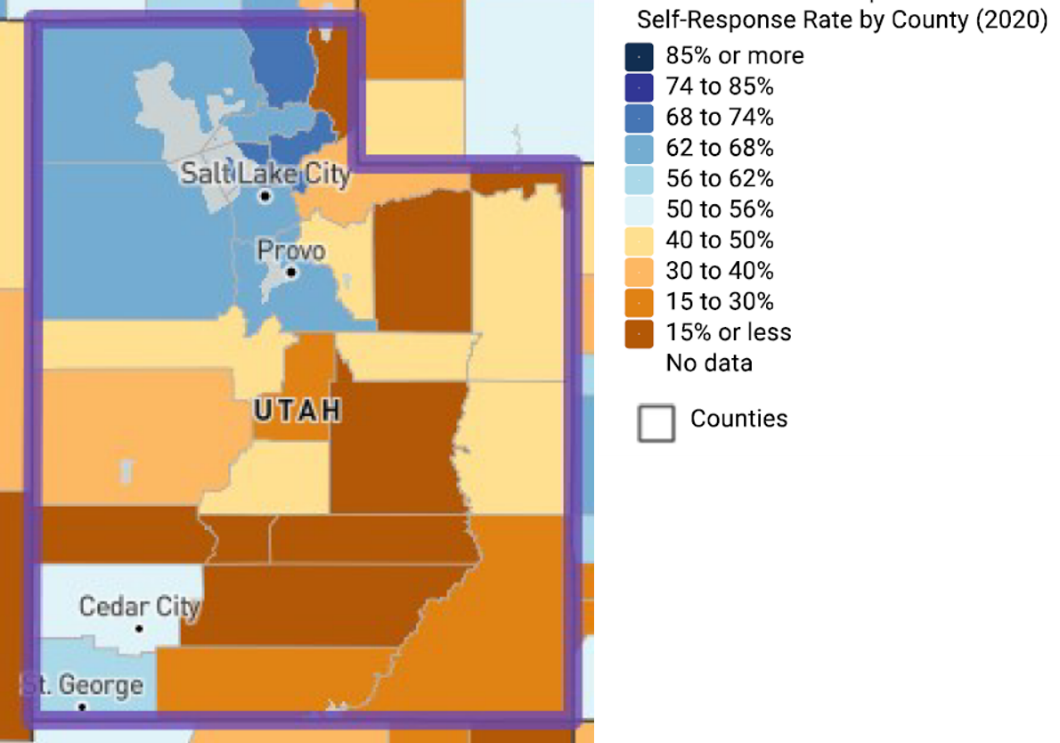Blog Post
Insight: COVID-19 and the 2020 Census
By: Mallory Bateman
Note: The opinions expressed are those of the author alone and do not reflect an institutional position of the Gardner Institute. We hope the opinions shared contribute to the marketplace of ideas and help people as they formulate their own INFORMED DECISIONS™.
May 8, 2020 – The latest available data shows Utah’s response rate to the 2020 Census at 61.6%. While this response rate is the seventh highest in the nation, within the state there are some disparities. A quick glance at the county-level response map shows that our urban counties are driving the high response, while our rural and more dispersed population counties have very low response. In nine of these counties, this is due in large part to 2020 operations being put on hold due to COVID19.[i]
In mid-March, slight delays on operations were introduced because of the pandemic. By April 13, the Census Bureau updated their operations and data release schedule with a four month delay. These delays addressed the need for social distancing to maintain the health and safety of the public and Census employees.
One operation, Update Leave, is impacting Utah’s rural areas. This operation involves a Census employee leaving an invitation to respond at the front door of residences without a traditional mailing address. Estimates indicate only 5% of households slated for Update Leave received the outreach before the initial hold on field operations occurred in March. This has effectively paused the 2020 Census in the nine Utah counties where the majority of households were slated for this outreach (Beaver, Daggett, Duchesne, Emery, Garfield, Piute, Rich, San Juan, and Wayne). Good news came out on May 4, when the Census Bureau announced that Update Leave work in Utah was resuming with extra safety precautions in place.
2020 Census Response Rates, Counties in Utah
Source: CUNY Hard to Count Map
The revised schedule also proposes a delay in publication of summary statistics, including data required for apportionment and redistricting. Subject to Congressional approval, these proposed delays mean that apportionment data will be delivered to the president by April 30, 2021 rather than December 31, 2020. Additionally, the redistricting data that was scheduled to go to states at the end of March 2021 will be pushed out to July 31, 2021. This delay provides the Census Bureau with the time needed to properly collect and process the data, but will adversely impact primary elections in some states.
The table below presents selected milestones in 2020 Census operations. Conducting a count of all residents is a massive effort under ordinary circumstances. Successfully executing this national enumeration during a pandemic poses unprecedented challenges. Because the situation remains dynamic, continue to monitor the 2020 Census website for the most up-to-date information.
[i] Kem C. Gardner Institute Analysis of Census Bureau data.
Mallory Bateman is a senior research associate and Utah State Data Center coordinator at the Kem C. Gardner Policy Institute.








